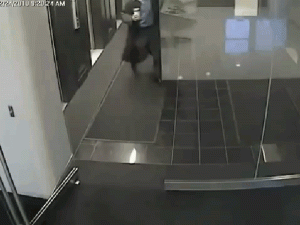 Have you ever watched someone walk into what they thought was a door equipped with automatic openers?
Have you ever watched someone walk into what they thought was a door equipped with automatic openers?
Most of the time they don’t even slow down, and just keep barreling through as they think the door is going to magically slide open for them.
Is it mean that I get a little bit of joy out of this?
Yes.
Does that make it any less funny?
No.
Automatic opening doors are incredibly handy. They only make your life easier.
Arms full of groceries? Automatic openers will help.
Want to avoid all of the germs that take up residence on the average door lever or push bar? Automatic openers will help.
However, as with most awesome things, with great power comes great responsibility. (Uncle Ben from Spiderman knew what he was talking about.) So, of course, automatic doors come with some rules of their own.
Automatic Openers
There are three types of automatic door openers: Low-energy operators, power-assist operators, and full-energy operators. The code varies from each one, but they all have their own set of rules. Depending on the type of facility you’re in will help better determine which automatic door operator is the best fit for you.
Full-Power Operators
If you have a building that gets quite a bit of foot traffic, a full-power operator will work well for you. These have different restrictions when it comes to speed and force. Plus, these types of operators require safety sensors, as well as control mats and guide rails. This is to prevent the doors from opening if someone happens to be standing in the path of the door.
Low-Energy Operators
When it comes to low-energy operators, these are used when a door has the option of being automatically opened or manually opened. The low-energy operators just give the person opening the door a little bit of help. They have limitations on opening speed and force because of the added factor of extra weight from the person manually opening the door. We have these here in the LockNet restrooms and they work great.
Because of the limits low-energy operators face, they don’t have requirements pertaining to sensors, control mats, or guide rails.
Power-Assist Operators
Power-assist operators fall under a lot of the same guidelines as low-energy operators. Power-assist operators help reduce the force required to open the doors so it can be opened more easily. However, they don’t open on their own and some manual force is at least required.
Are automatic openers something you’ve been considering for your facility? Here at LockNet, we’d be happy to help and offer up all the information we have. Give us a call today!
